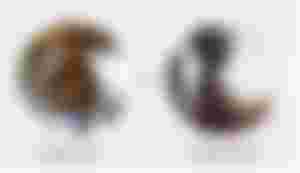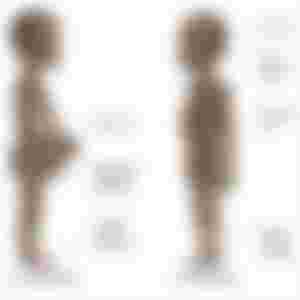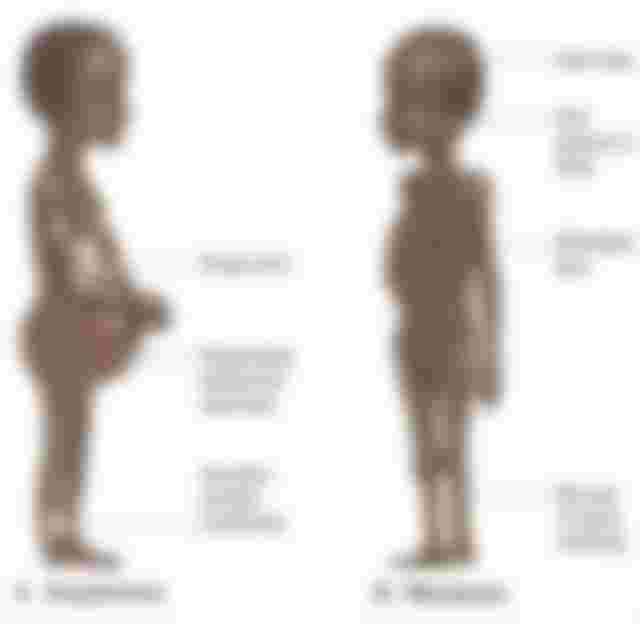
Malnutrition is of two types these are primary and secondary .Primary malnutrition occurs when we have insufficient nutrients in our diet according to our RDA. Secondary malnutrition occurs when we have some problem in our body that don't let nutrients absorb in our body.
Malnutrition occurs due to poor food supply , poor diet , food faddism , metabolic abnormalities and emotional factors.
Malnutrition leads to marasmus and kwashiorkor.
Marasmus:

It is due to general starvation.It occurs due to inadequate calories intake may be due to insufficiency of the diet to improper feedings habits or to metabolic abnormalities.
Cinical manifestation:
There is a failure to weight gain. Skin becomes wrinkled due to loose subcutaneous fat. Face face shrunken and money like. Abdomen may be distended or become thin. Appetite may be reduced or extreme with occasional diarrhoea. Vitamin deficiencies occur.
Kwashiorkor:

It occurs when diet does not contain adequate amounts of essential amino acids, nitrogen equilibrium is not maintained. Adequate calorie intake as carbohydrates or fat helps to minimize protein requirement.
Clinical manifestations:
The child becomes apathetic, anaemia, anorexic and oedematous. Diarrhoea occurs. There is severe growth retardation. Oedema is present. Weight lose occur. Skin changes may occur. Darkening of the skin appears in the areas of irritation but not in those exposed to sunlight. Crack appears at folds. Ulcer may develop. Skin loses its elasticity. Hair texture become coarse.
Child becomes weak, thin and atrophic, but there may be an excess of subcutaneous fat.
Mental changes , especially irritability and apathy, are common. Coma and death may follow.
Live enlargement is common. Necrosis or fibrosis may occur but cirrhosis is rare. The heart may be small in the early stage of the disease but is usually enlarged later on.
Laboratory data:
The most significant index of protein malnutrition is the lowering of the serum albumin level. Low level of serum albumin is responsible for nutrition oedema.
Ketonuria is common in the early stage .serum cholestrol is low. Anaemia may be normocytic, microcytic or macrocytic. Other deficiencies of vitamins and minerals are usually evident.
Treatment:
Treatment of both of them require immediate management of any acute problem presented by diarrhoea or shock or any respiratory distress.
Later on skimmed milk, casein hydrolysates or synthetic amino acid mixture may be used. Diet containing 125 to 150 kcal and 3 to 4 gm of good quality protein per kg of body weight per day will cover the child's need.
Proper diet administration is required to treat both these diseases.


